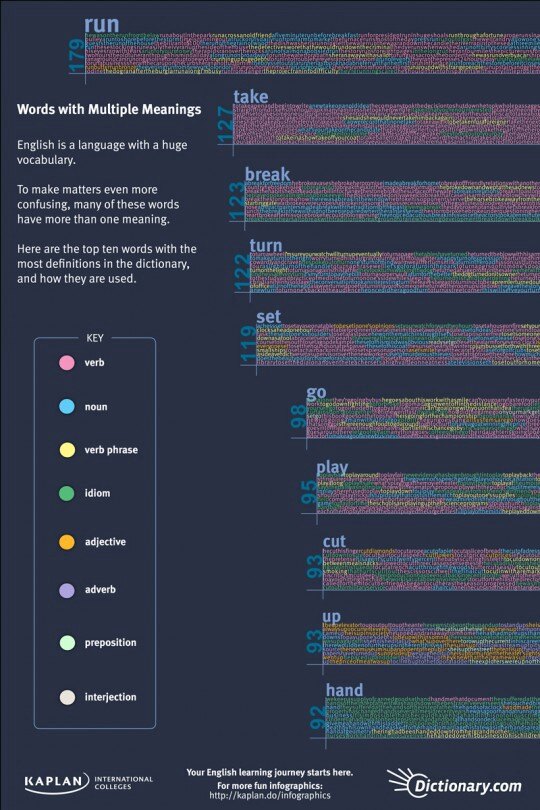How important is context for the translation process? It’s essential.
Without context, translators often have to do extensive research to ascertain the source text author’s intended meaning. In the case of website translation, mobile app localization, and other types of digital content projects, context is imperative.
However, most computer-assisted translation tools and translation management systems do not offer translators (let alone other process participants) an in-context view of what they are translating. The work becomes a guessing game. Just consider that the word “run” has 179 different meanings, including nouns, verbs, verb phrases, and other parts of speech. How will the translator know how to translate this term without context?
Check out the infographic below, which shows how complex translating a single word can be when there is no context for the translator. While it might be tempting to think that translators always receive all the necessary context — not only visual, but stylistic and terminological — the reality is that most translation projects that take place today are done using a traditional method that leaves the translator without this essential information. This means that not only does quality suffer — turnaround times do too.
At Smartling, we always advise our customers on why context matters. It’s why our technology makes in-context translation a reality for diverse types of content. Whether you’re looking to translate website copy or even an app, if you want to ensure quality for your translations, remember to enable your agencies and professional translators by providing them with the very best context you can — both in terms of the technology you use, and the supporting resources you offer to them through that technology. 

.jpg)





